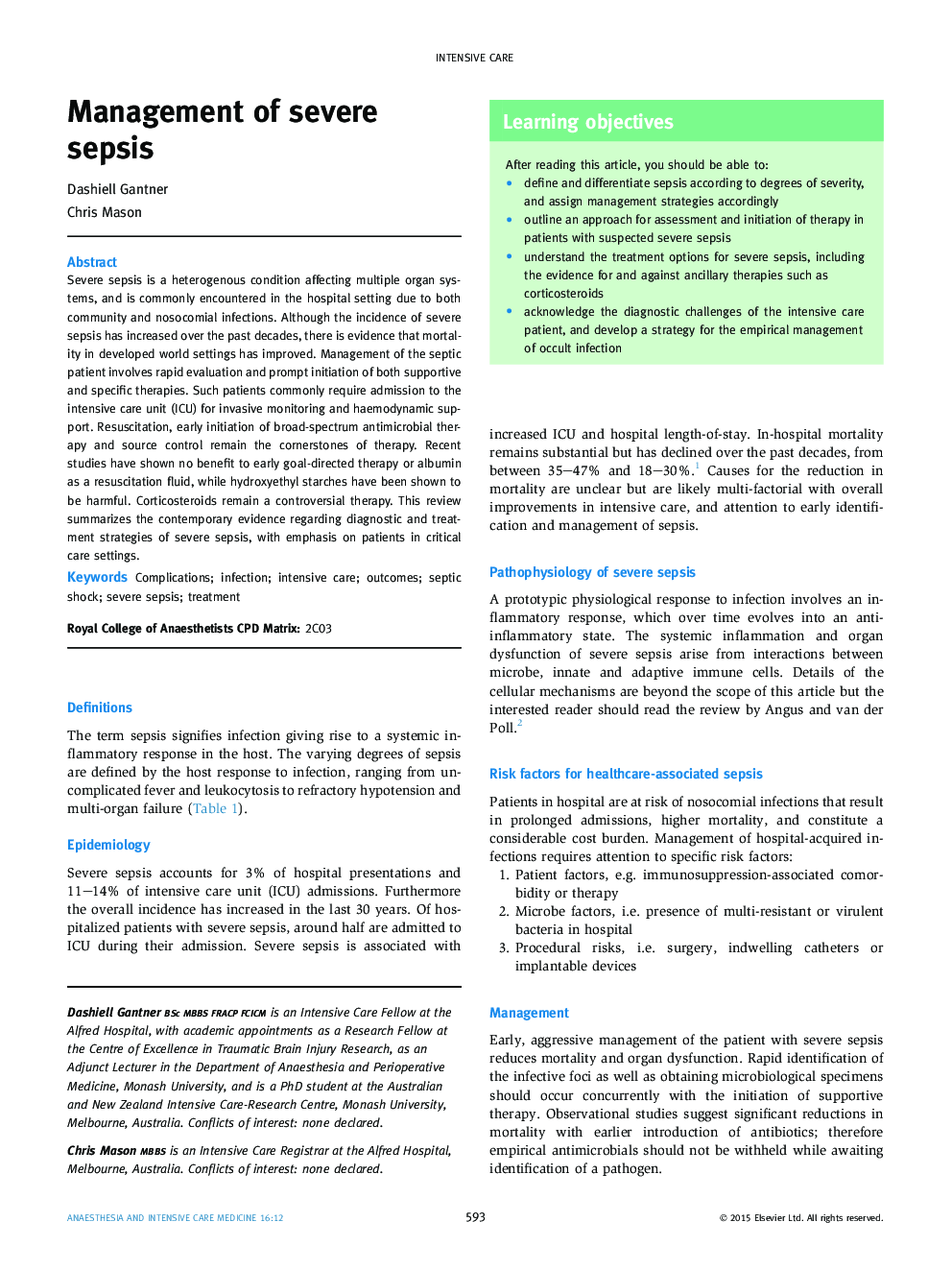| Article ID | Journal | Published Year | Pages | File Type |
|---|---|---|---|---|
| 2742053 | Anaesthesia & Intensive Care Medicine | 2015 | 5 Pages |
Severe sepsis is a heterogenous condition affecting multiple organ systems, and is commonly encountered in the hospital setting due to both community and nosocomial infections. Although the incidence of severe sepsis has increased over the past decades, there is evidence that mortality in developed world settings has improved. Management of the septic patient involves rapid evaluation and prompt initiation of both supportive and specific therapies. Such patients commonly require admission to the intensive care unit (ICU) for invasive monitoring and haemodynamic support. Resuscitation, early initiation of broad-spectrum antimicrobial therapy and source control remain the cornerstones of therapy. Recent studies have shown no benefit to early goal-directed therapy or albumin as a resuscitation fluid, while hydroxyethyl starches have been shown to be harmful. Corticosteroids remain a controversial therapy. This review summarizes the contemporary evidence regarding diagnostic and treatment strategies of severe sepsis, with emphasis on patients in critical care settings.
